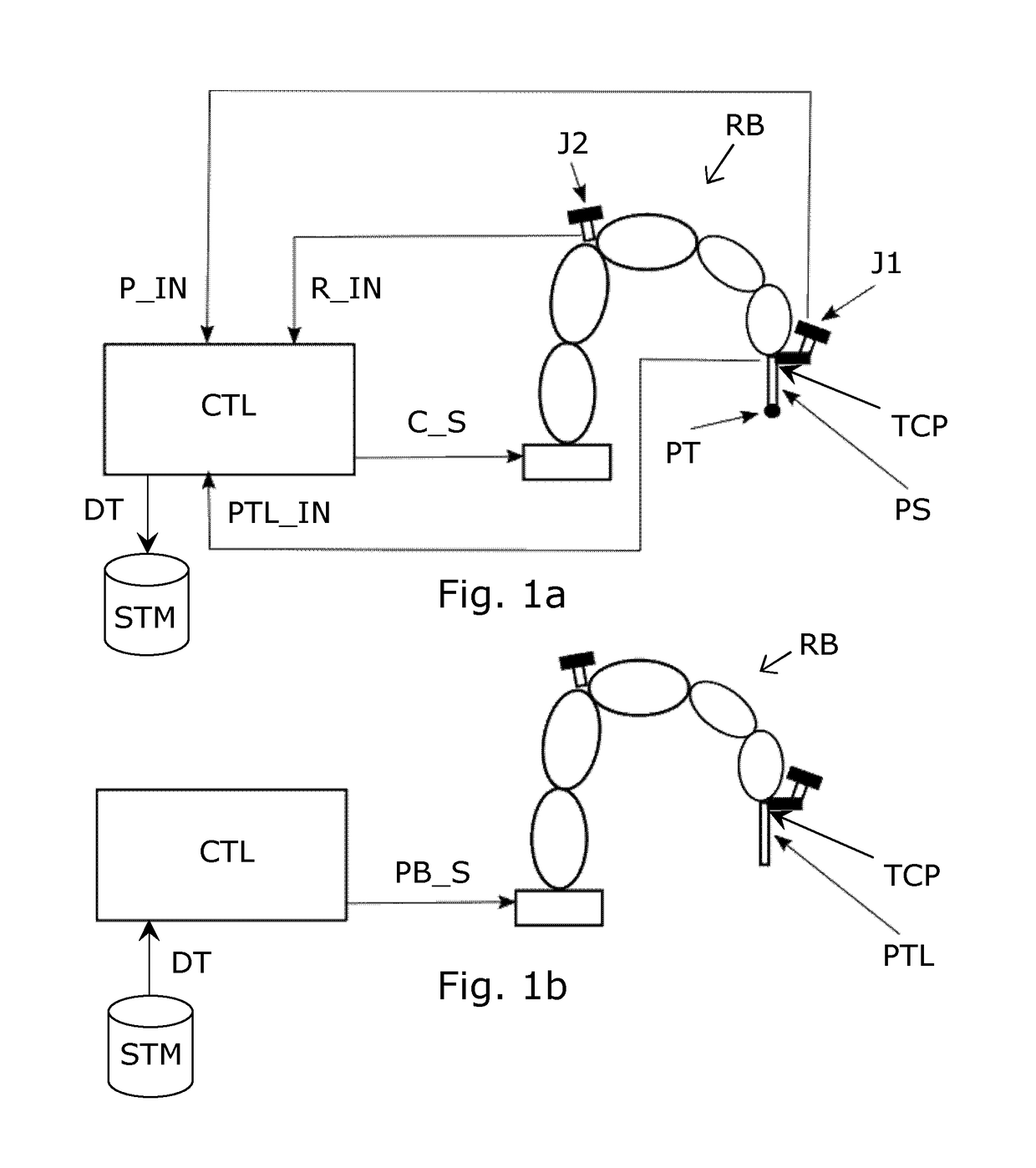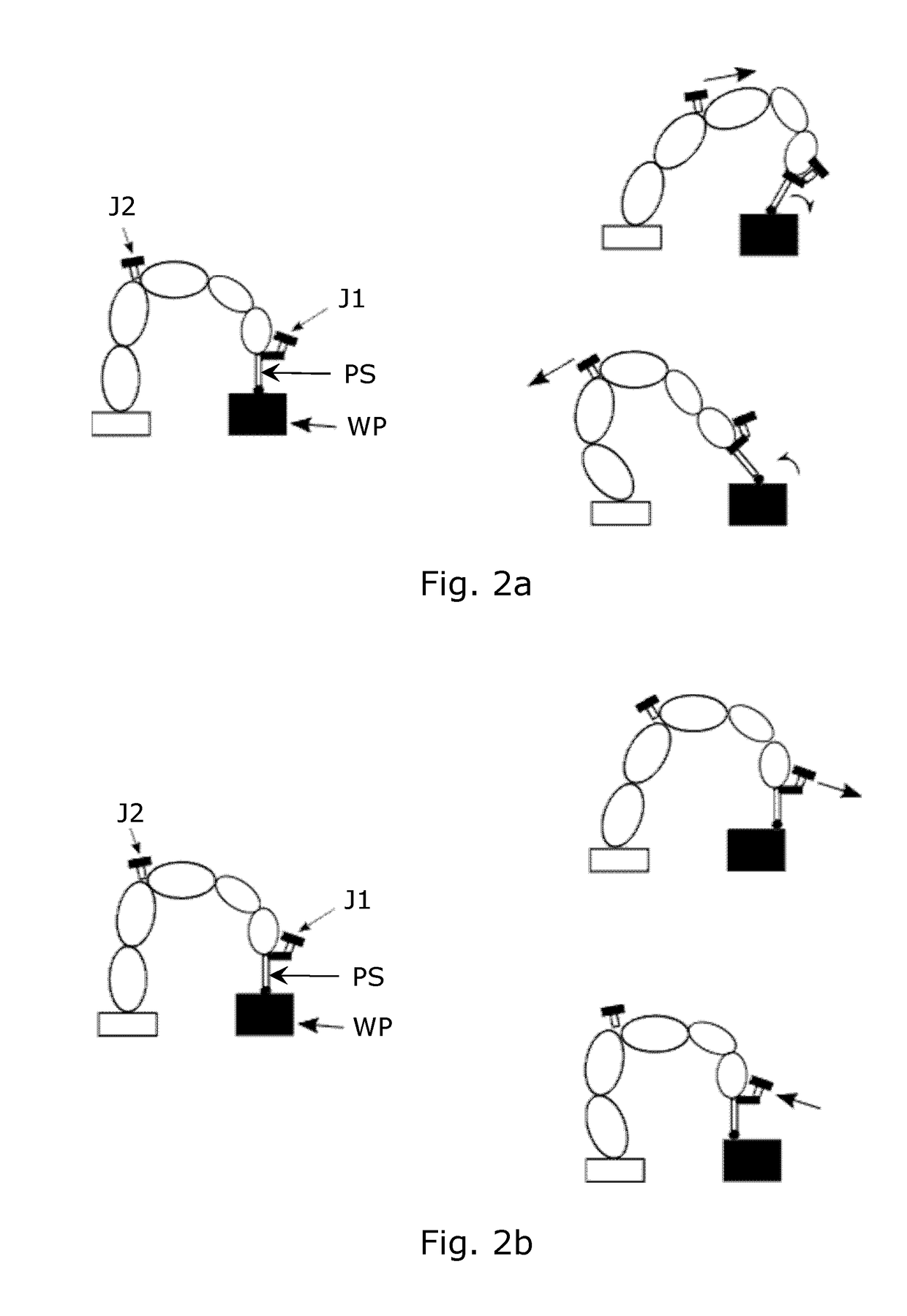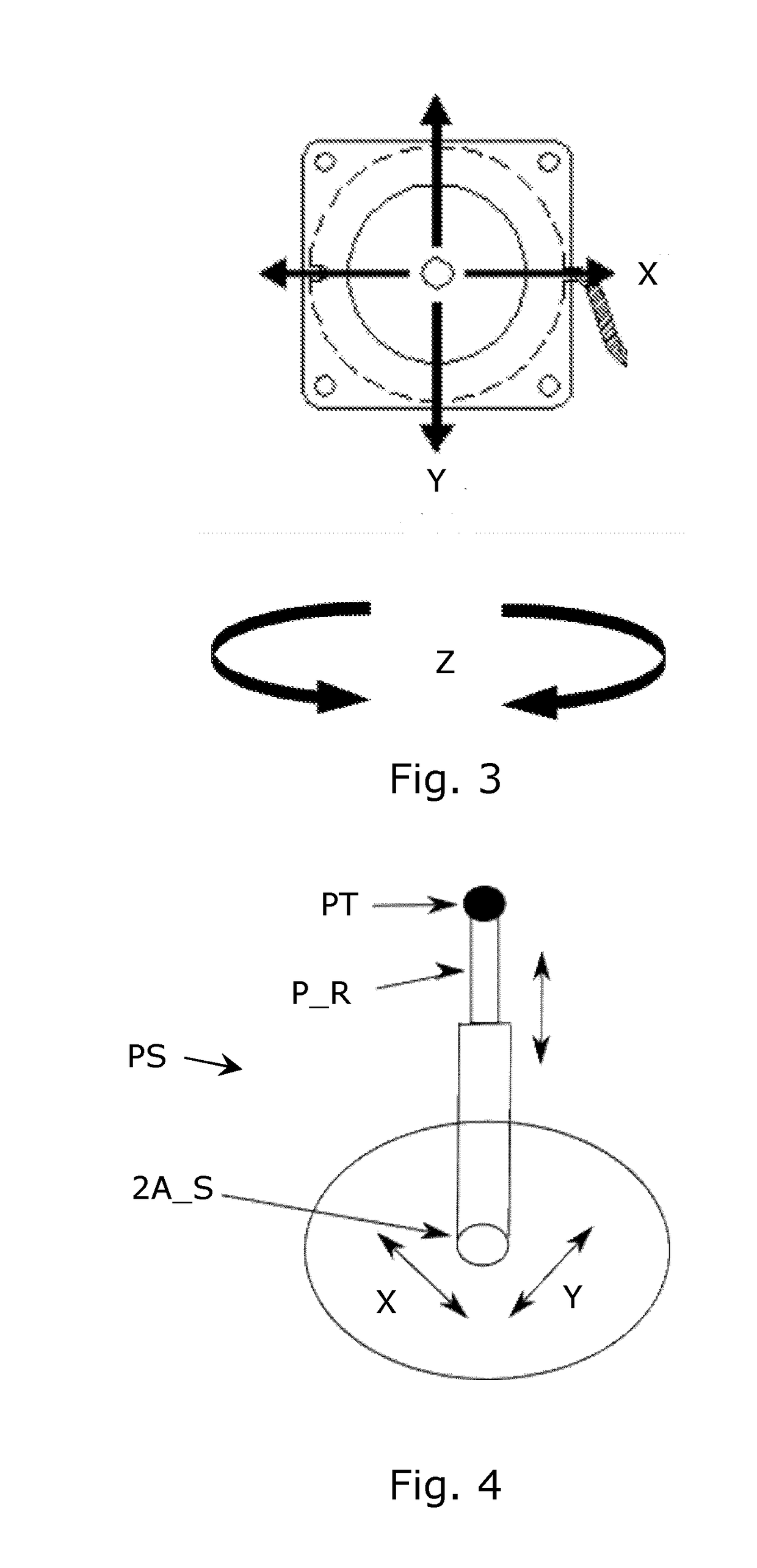Robot trajectory learning by demonstration with probe sensor
a robot and sensor technology, applied in the field of robots, can solve the problems of complex human demonstration methods, high precision tasks, complex and time-consuming translation, etc., and achieve the effect of fast robot learning
- Summary
- Abstract
- Description
- Claims
- Application Information
AI Technical Summary
Benefits of technology
Problems solved by technology
Method used
Image
Examples
Embodiment Construction
[0061]FIG. 1a shows basic parts of a robot learning system system embodiment during a real-time trajectory learning session, while FIG. 1b shows the same robot RB in an execution process, e.g. a welding process, based on data DT logged during the learning session.
[0062]The robot RB has in the example an arm formed by 5 joint arm elements between a base and a tool center point TCP. A controller of the robot CTL serves to control actuators for moving the arm elements. A probe sensor PS with a probe tip PT is mounted on the TCP of the robot RB, so as to continuously sense distance and orientation between the probe tip PT and the TCP during the real-time trajectory learning session. This allows contact with the probe tip during the trajectory following on an object, e.g. a welding trace. A signal PTL_IN is generated by the probe sensor in response to the sensed distance and orientation.
[0063]The user interface comprises two three-axis joysticks J1, J2 both mounted on the robot arm, name...
PUM
 Login to View More
Login to View More Abstract
Description
Claims
Application Information
 Login to View More
Login to View More - R&D
- Intellectual Property
- Life Sciences
- Materials
- Tech Scout
- Unparalleled Data Quality
- Higher Quality Content
- 60% Fewer Hallucinations
Browse by: Latest US Patents, China's latest patents, Technical Efficacy Thesaurus, Application Domain, Technology Topic, Popular Technical Reports.
© 2025 PatSnap. All rights reserved.Legal|Privacy policy|Modern Slavery Act Transparency Statement|Sitemap|About US| Contact US: help@patsnap.com



